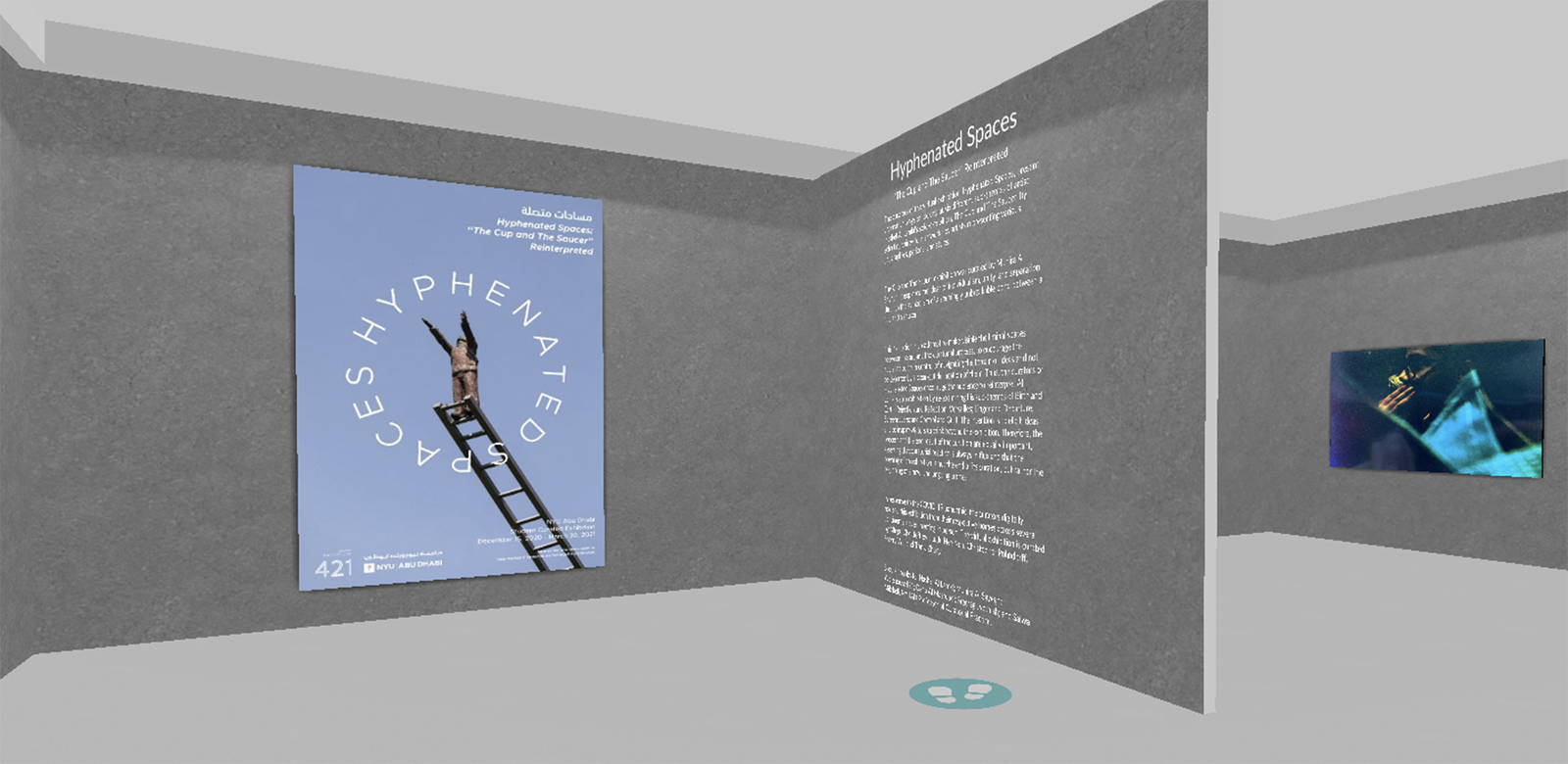
Introduction by Salwa Mikdadi, NYUAD Professor of Curatorial Practice
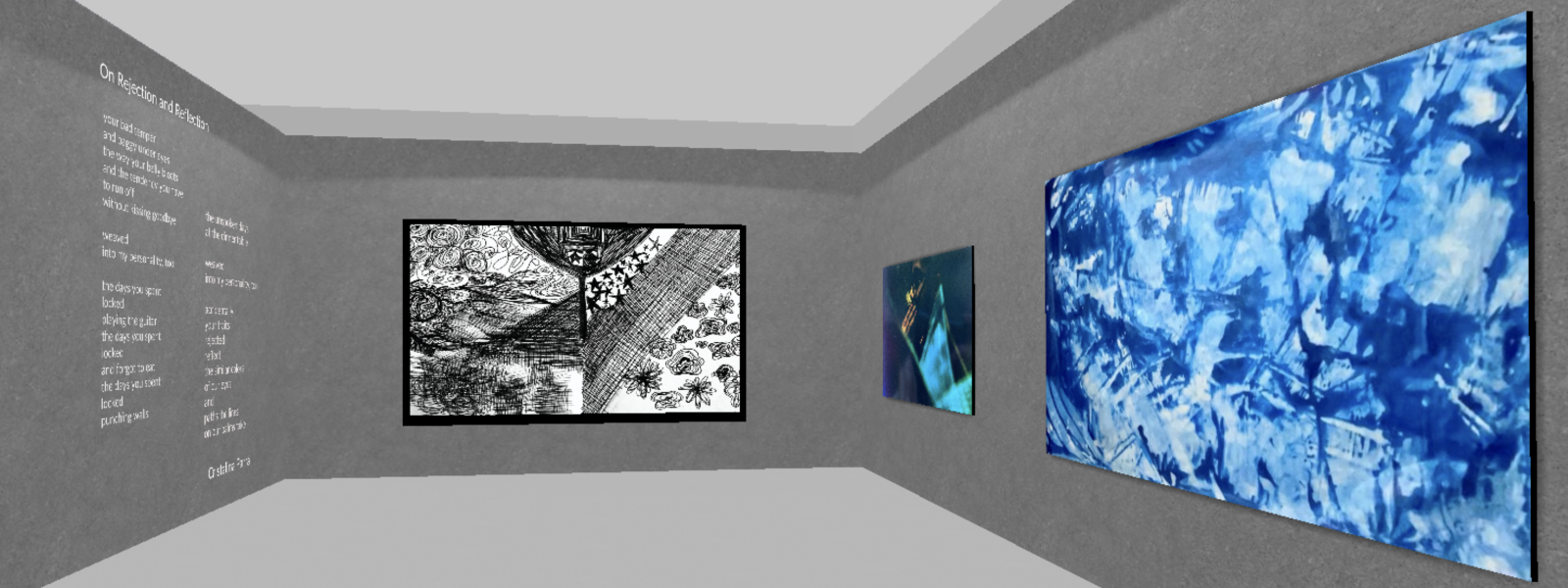
Re: jection-flection-born
The making of an art piece is a process of constantly contradicting one's ideas. Re: jection-flection-born celebrates the act of abandonment of ideas by the artist during the creative process and the celebration of ideas reborn from the past unfleshed-out thoughts. This section is curated in response to Hashel Al Lamki’s sub-theme “Rejection and Reflection” in which the artist uses recycled materials from his previously abandoned works and produces new pieces based on old ideas. This sub-theme focuses on rejection by the self, rather than by others. The five artworks selected, ranging from video art to photography and from visual art to poetry, echo Al Lamki’s themes of individualism and the collective. The products of these aborted or incomplete processes seen in the selected artworks are unrefined and unpretentious; they are about the artists’ creative process from refusing to surrendering. This section invites the visitors to look at the art through the lens of ‘art for art’s sake’ rather than situating the art within certain styles or ‘-isms’ because they don't belong to any. The artworks are made of what was rejected, the creations born out of self-rejection and reflection.
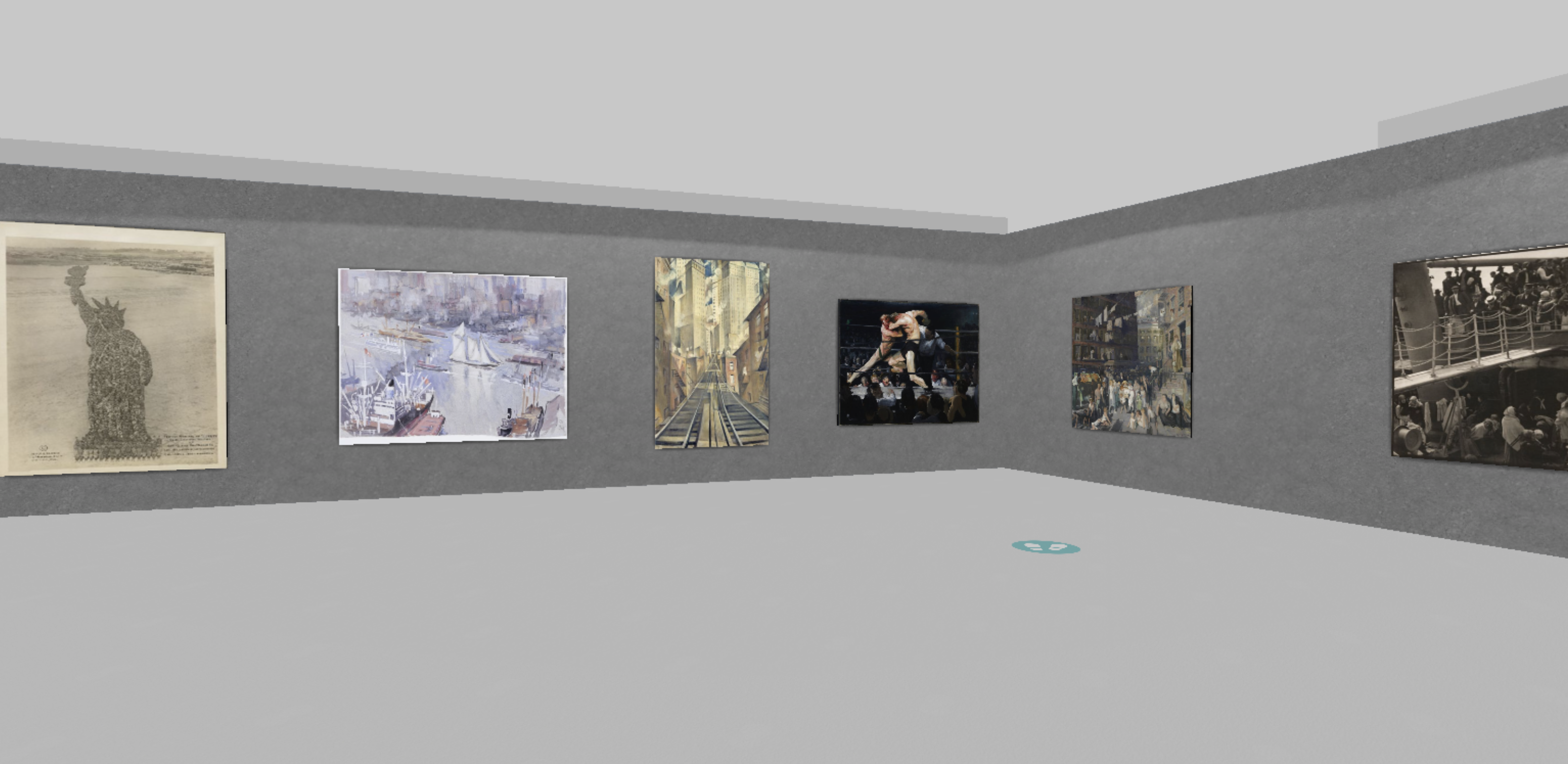
De-Feat
De-Feat responds to Hashel Al Lamki’s artworks in the sub-theme “Versaille,” which is a large painting of iconic locations in the cities that Al Lamki inhabited throughout his life. The selection of works for De-Feat challenges the romantic idea of the self’s triumph in a city. Together the artworks probe how the artists’ formal techniques could reflect their responses to the romanticization of a city, how one could navigate the disillusionment that follows the ‘highs’ of modernity’s spectacle, and how urban space and activity could challenge an individual to retreat from the flattery of one’s highest feat at a moment to the reality of the everyday. However, the constant changes and movement that surround the life of the urbanites can blur the separations between an individual’s personal and public identity. Such obfuscation gets compounded when an individual moves to another city, for the idea of the ‘self’ varies according to contexts.
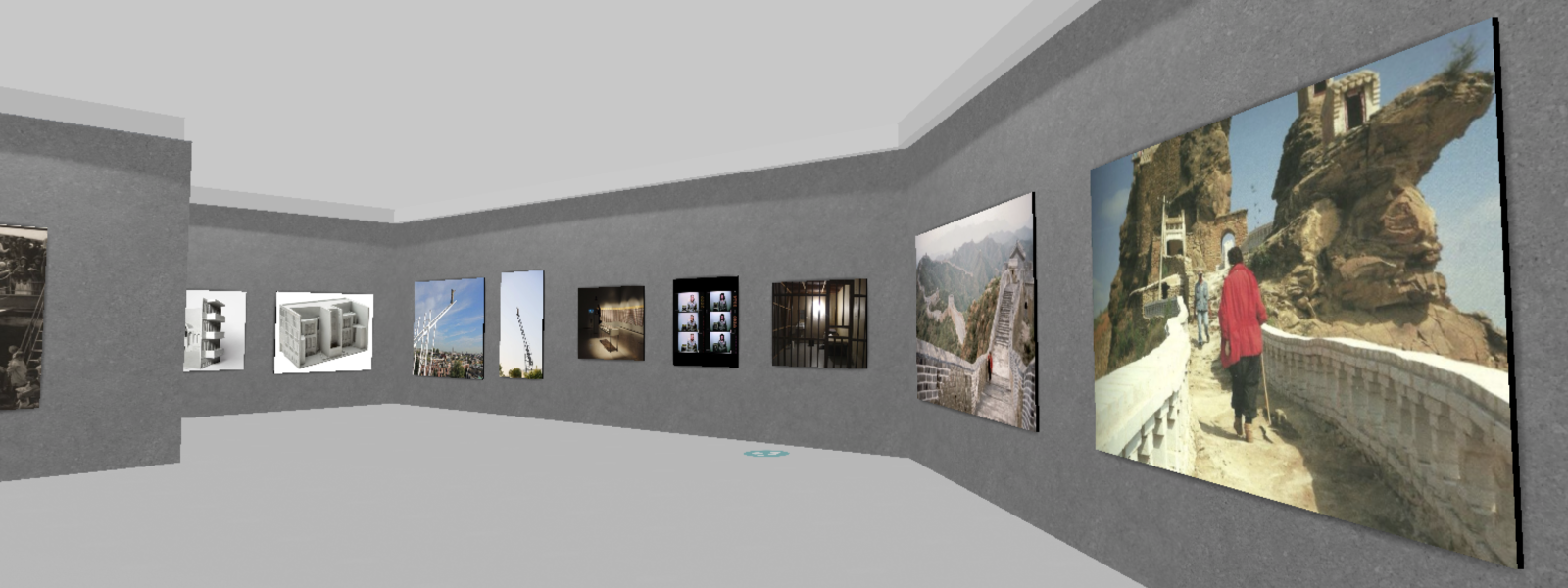
Departure and Linger
Curated in response to Hashel Al Lamki’s sub-theme “Linger and Departure,” this section focuses on the consequences that arise when two parts of a unit fall apart, as well as the motivation behind the separation which takes many forms. These forms include frustration, confinement, desire, aspiration, or longing. Thus, each artwork selected depicts and challenges the viewer to analyze one possible form of separation. Curator Munira Al Sayegh describes, “Linger and Departure” as “... conditional to one another and forever bound. The proposition of motion, in this way, is not one that is linear, but one that is cyclical and human.” In other words, Departure and Linger are notions that are dynamically intertwined with each other, where one begets another in an endless cycle of push and pull. The sub-theme calls for artwork that is neither static nor bound to a single plain surface. Hence, all of the artworks chosen in response to this theme are either performance or installation pieces that evoke a potentially emotional response from the viewers.
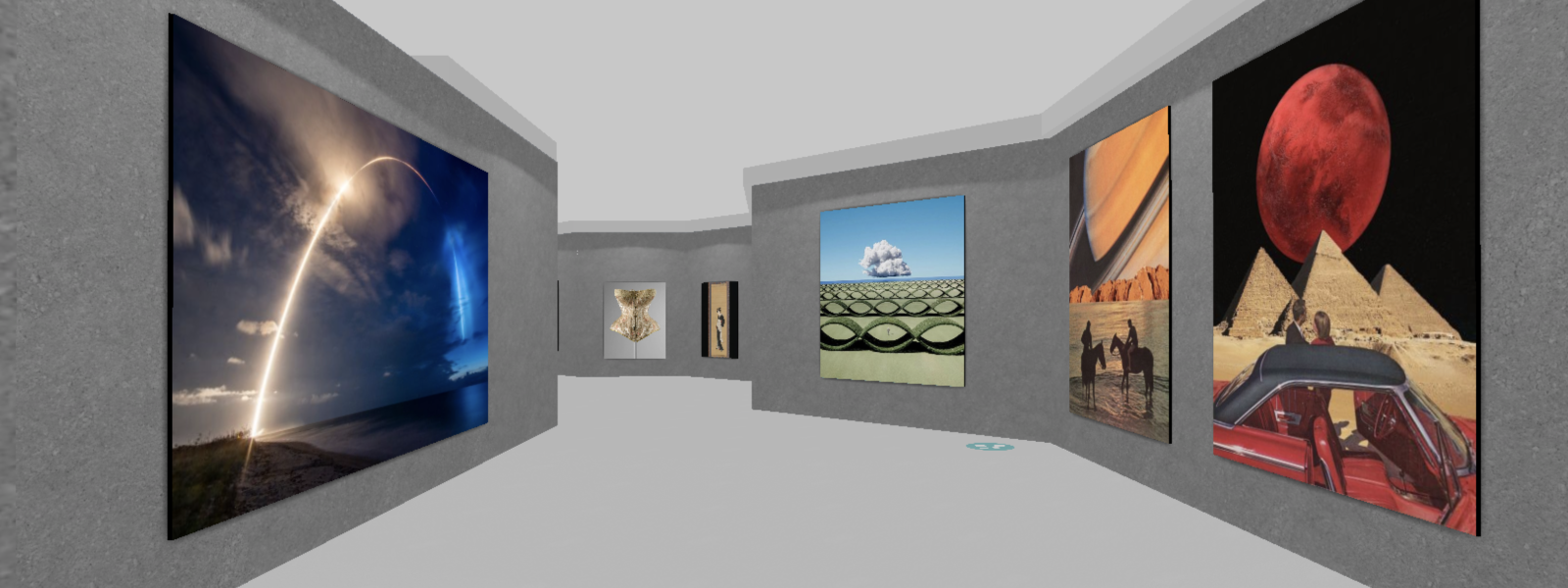
Mirage
Throughout our lives, we have ‘screensaver’ moments where the impossible suddenly seems feasible. Mirage is a response to the sub-theme “Screensavers” of Hashel Al Lamki’s The Cup and The Saucer exhibition. In Mirage, audiences can see works of art that relate to the seemingly implausible imagery of nature and daily life, placed on the fine line between what is deemed real and what is imaginable. The artworks by contemporary artists selected in this section of the exhibition present a fantastical landscape that includes one familiar detail which heightens the imagination of the viewers and leads them to an active engagement with the artwork. In the end, Mirage is an illusion of what is real. Everyday we see images and videos that draw the viewers into an alternate dimension, where the viewers can picture themselves inside an imaginary landscape. In this section, the viewers are encouraged to imagine themselves in a landscape that is at the thresholds between fiction and reality.
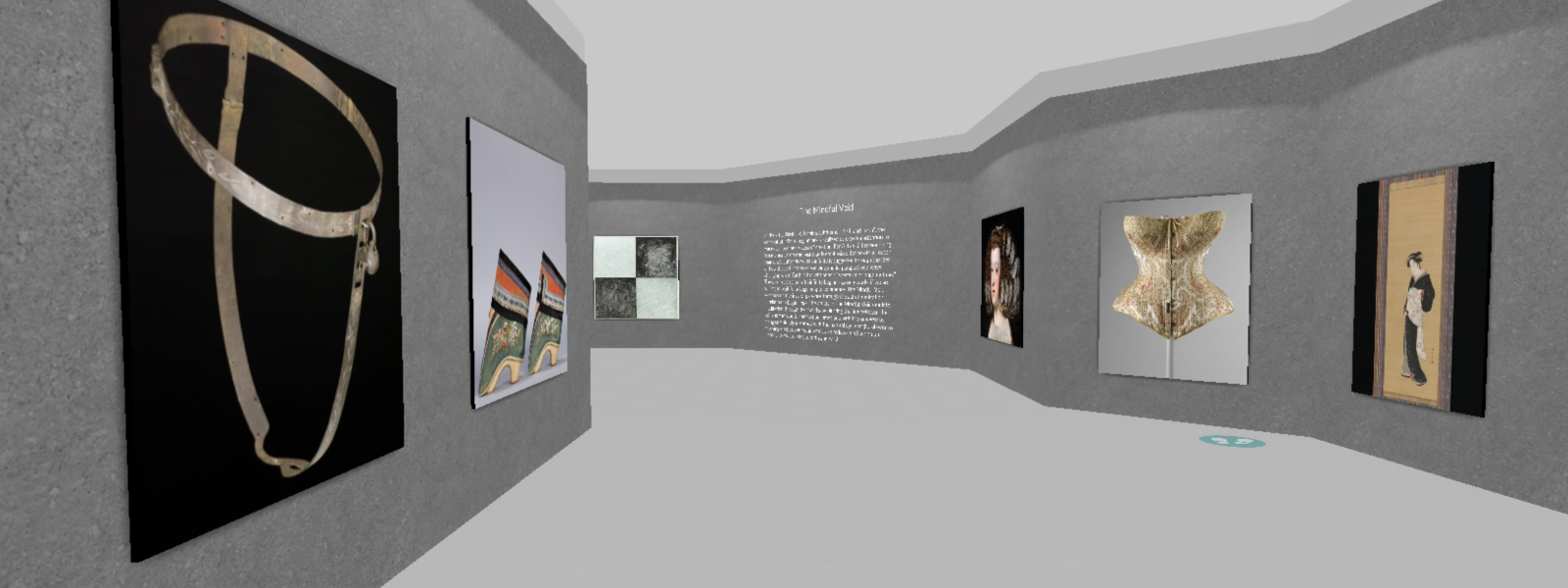
Gender, Control, and Guilt
This sub-theme explores Hashel Al Lamki’s theme “Control and Guilt,” as seen through the lens of women over the course of history. The guilt that is laid upon women through beauty standards, fashion trends, and cultural expectations has been prevalent for centuries in different parts of the world. The definition of guilt and control in this exhibition is narrowed down from the initial definition provided by the original exhibition The Cup and The Saucer, by inviting the audience to contemplate an alternate view of action and reaction in response to control. Such subliminal control happens without the realization of those being controlled, yet such practices continue to conform to cultural and commercial influence. Through wearable objects, such as corset, hair decorations, binding shoes, kimonos, and chastity belt with a padlock – works in this section explore how not being able to conform to trends could lead to guilt and, in turn, guilt results in control.
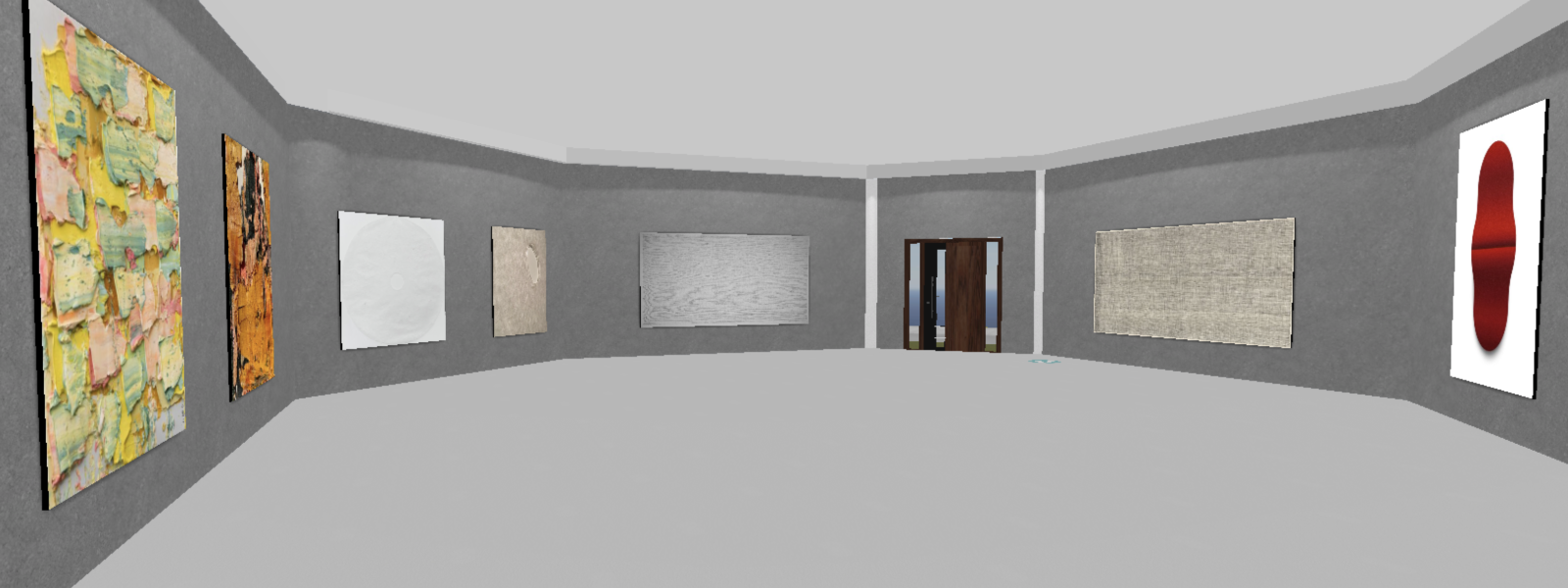
The Mindful Void
In the artist Hashel Al Lamki's subtheme, “Birth and Earth”, the concept of infinite beginnings is realized by drawing attention to the never-ending process of creation. For Al Lamki, the beginning is a moment from the past that is emphasized for no other reason than one’s subjectivity. The infinite is suggested through the idea of how the self is forever evolving and its perspective always changing when Earth is thought of as a “spectrum of ongoing time.” Thus, our obsession with infinite beginnings only works if we are willing to wait for a beginning to commence. The Mindful Void expands on the idea of patience through the act of meditation in relation to beginnings. The artists in The Mindful Void emulate meditation through their works by blurring the line between the self and the world. Their art becomes one with the universe by being completely absorbed with the natural cycle of the silkworms or the growth and decay of plants, it follows a reflection on materiality that relates to birth and earth.
